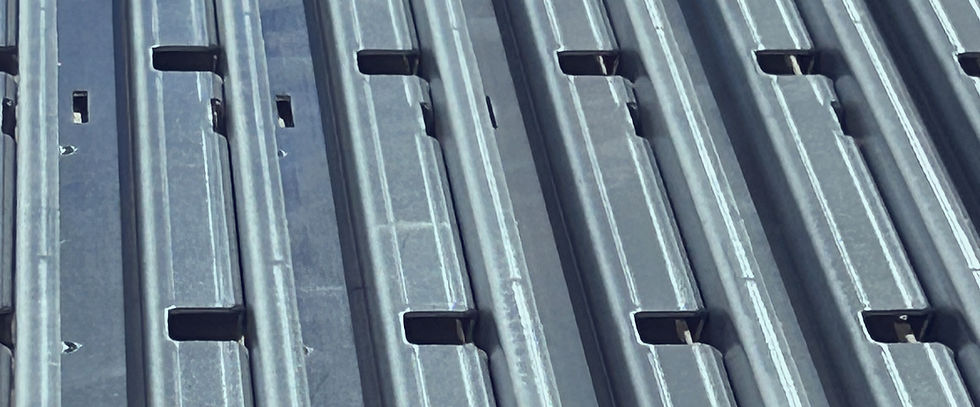Metal Solutions for the Construction Industry: Durability, Strength, and Efficiency
- Adriana Gutierrez, Digital Media Producer

- Mar 27
- 2 min read
Updated: May 6
The construction industry demands materials that can withstand harsh conditions and provide long-lasting performance. Metal solutions have become indispensable, offering durability, strength, and efficiency that are crucial for modern construction projects. This article explores the various metal solutions used in the construction industry and how they contribute to building robust and efficient structures.
Why Metal is Essential in Construction:
Strength and Durability
Metals offer superior structural integrity, capable of withstanding heavy loads and extreme weather.
Longevity
Metal components resist corrosion, decay, and wear, ensuring a longer lifespan for building and infrastructure.
Versatility
Metals can be shaped and fabricated into various forms, accommodating diverse architectural designs.
Sustainability
Many metals are recyclable, reducing environmental impact.
Efficiency
Prefabricated metal components speed up construction timelines.

Common Metal Solutions in Construction:
Structural Steel:
Applications: Beams, columns, frames, and support structures.
Benefits: High strength-to-weight ratio, ease of fabrication, and rapid assembly.
Metal Roofing and Cladding:
Applications: Roof panels, wall cladding, and exterior facades.
Benefits: Weather resistance, durability, energy efficiency, and aesthetic appeal.
Metal Framing:
Applications: Wall framing, floor joists, and roof trusses.
Benefits: Lightweight, non-combustible, termite-resistant, and dimensionally stable.
Reinforcing Steel (Rebar):
Applications: Concrete reinforcement in foundations, slabs, and columns.
Benefits: Enhances concrete strength and prevents cracking.
Metal Decking:
Applications: Floor and roof decking systems.
Benefits: High strength, fire resistance, and provides a stable surface for concrete pouring.
Architectural Metalwork:
Applications: Decorative panels, railings, facades, and custom architectural features.
Benefits: Aesthetic flexibility, durability, and customization.
Metal Building Components:
Applications: Pre-engineered buildings, metal sheds, and warehouses.
Benefits: Cost-effectiveness, rapid construction, and durability.
Metal Fasteners and Connectors:
Applications: Bolts, screws, rivets, and connectors for joining metal components.
Benefits: Strong and reliable connections.
Metal Drainage Systems:
Applications: Gutters, downspouts, and drainage pipes.
Benefits: Corrosion resistance and efficient water management.
Metal Scaffolding and Shoring:
Applications: Temporary support structures during construction.
Benefits: Strength, stability, and ease of assembly.

Benefits of Using Metal in Construction:
Increased Structural Integrity
Metal provides robust support, ensuring the stability and safety of structures.
Reduced Maintenance Costs
Metal's durability minimizes the need for frequent repairs and replacements.
Faster Construction Timelines
Prefabricated metal components and rapid assembly methods speed up project completion.
Enhanced Design Flexibility
Metals can be shaped and customized to meet diverse architectural requirements.
Improved Fire Resistance
Metal is non-combustible, enhancing building safety.
Sustainable Building Practices
Recyclable metals contribute to environmentally friendly construction.
Considerations for Metal Selection:
Material Properties
Select metals based on strength, corrosion resistance, and thermal properties.
Environmental Conditions
Consider the climate and potential exposure to moisture and chemicals.
Cost-Effectiveness
Balance material costs with long-term performance and maintenance.
Design Requirements
Choose metals that can be fabricated into the required shapes and sizes.
Building Codes and Regulations
Ensure compliance with relevant standards and codes.
Conclusion:
Metal solutions play a critical role in modern construction, providing the strength, durability, and efficiency needed for robust and long-lasting structures. By understanding the various metal applications and considerations, construction professionals can leverage these materials to create innovative and sustainable building projects.






